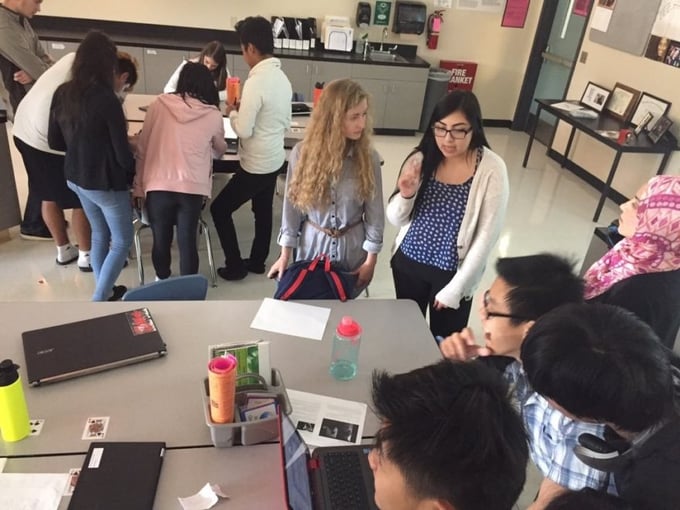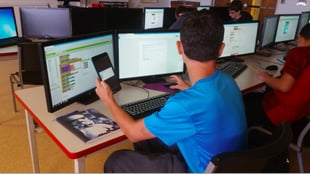Jeffrey Crapper is a biology and health science Career and Technical Education (CTE) teacher at Health & Science High School (HS2) in Beaverton, Oregon. Jeffrey is a National Board Certified Teacher-Early Adolescent Science and earned the honor of 2016 Oregon High School Science Teacher of the Year.
Few things are more rewarding as an educator than seeing my students take full ownership of their learning, and as a PLTW Biomedical Science instructor, my Biomedical Innovation students amaze me daily.
Initially, it was overwhelming to have a Biomedical Innovation course with nearly 40 students. Since my school is fairly small with approximately 400 students, my Biomedical Innovation classes were fairly imbalanced in size due to a scheduling conflict with a college statistics course. However, incorporating the Kagan Cooperative Learning model in my Biomedical Innovation course this year has resulted in the most significant instructional improvement as an educator.
Using the Kagan model, each student is assigned a specific role for each project. These roles include facilitator, task manager, recorder/reporter, resource manager, and spy. I randomly assign students to their groups for each module, giving students the opportunity to work in a variety of peer combinations and group roles.
In my experience, having this group structure established has become a necessity since my class periods are only 45 minutes in length and any instructional transitions simply limit the amount of class time available for my students to complete the various “missions” within the curriculum.
I have included a brief description for each role below:
- The facilitator helps their team get started and makes sure each person understands the task.
- The recorder/reporter shares the team’s results with the class, speaks to the teacher when the entire table has a question, records the group’s work on posters/projects when applicable, and makes sure team members understand what information they need to record in their notebooks.
- The resource manager gets necessary supplies and materials, makes sure the team has cleaned up after each task/activity, manages the resources/materials for each lab/activity, and seeks input from each person during classwork and then calls the teacher over to ask a team question.
- The task manager keeps the team focused on the assignment and checks in with each group member to make sure assigned tasks are being completed.
- When the team is stuck, the spy can go to another team and observe their work. The spy may not talk to or touch any other team or their work/supplies, may only get up as a spy ONCE during a class period, and may not talk when observing other groups in the spy role. Once spies return to their groups, they report on what they’ve learned.
Having these defined roles in an activity-, project-, problem-based (APB) course like Biomedical Innovation has greatly increased the effectiveness of my instruction, quality of student work, and overall student engagement. It has also created a culture in which students are encouraged to discuss and solve their problems on their own as they collectively work as a group to complete each task.
The use of huddles, along with using the Kagan model, has helped tremendously as well. Instead of starting each class with up-front, entire-class discussions, my students have learned to start immediately on their task for the lesson. While students are actively working in their groups, I often request a huddle with one of the specific roles mentioned above.
For example, resource managers know it is their responsibility to gather the needed supplies for each activity or lesson. With such a large class, I simply cannot maintain and manage all the supplies necessary for the many open-ended, kinesthetic projects in my Biomedical Innovation course. Effective use of these huddles has also provided a means of sharing with students essential information on completing their projects without inhibiting their current work production or interrupting their focus on the assigned task.
Having these systems and routines established in my Biomedical Innovation course has created a strong sense of student ownership and responsibility for all my lessons. My students continue to amaze me with their inquiry mindset and their ability to solve complex tasks with minimal instruction or intervention from their teacher. As an educator, I could not be more proud of my students as they continue to perform well academically and explore the various issues involved in the healthcare and medical fields in the 21st century.
PLTW’s blog is intended to serve as a forum for ideas and perspectives from across our network. The opinions expressed are those of each guest author.


